Here the most beautiful castles of Germany are presented to you.
-->Get Revolut The Best Travel Credit Card and Money App For Free<--
We have tried to select buildings from all federal states.
For me, castles have always had something magical, mystical, gloomy and powerful. As the king rules over his subjects, it watches over the country just as majestically from its mountain as a throne. When I think of castles, I think of brave warriors, brave heroes, enchanting princesses and tyrannical kings. Nothing makes the Middle Ages more tangible for me than a castle that is centuries old. And what would Game of Thrones, Lord of the Rings or Harry Potter be without their famous castles? Definitely a lot less fantastic. But now to the selection of castles and palaces in Germany that are considered beautiful or very interesting to visit. If you know more dream castles, please write to me or leave a comment.
Castles in Germany – These are the 25 most beautiful ones
Castles in Bavaria
Neuschwanstein Castle: Hohenschwangau, Bavaria

Neuschwanstein is not only the most famous castle in Bavaria, but probably in the whole of Germany and of course one of the most beautiful. The royal accommodation, located in the Bavarian Allgäu above Hohenschwangau near Füssen, has been an absolute tourist magnet for years. About 1.5 million tourists from all over the world come to Bavaria every year to visit the “fairy-tale castle” built for King Ludwig II. The building, designed by Christian Jank and built by Eduard Riedel and Georg von Dollmann, is definitely one of the most beautiful castles in Germany and probably worldwide.
Website: www.neuschwanstein.de
Hohenschwangau: Schwangau, Bavaria
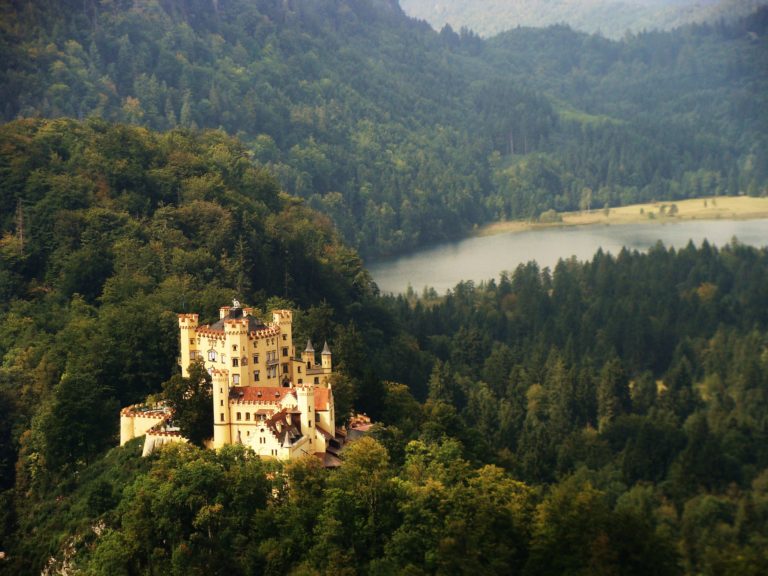
Not far from Neuschwanstein is Hohenschwangau, which was built between 1537 and 1547 into the outer walls of the 14th century Schwanstein castle.
In 1832, King Max II, son of King Ludwig I bought the castle and changed the name to Hohenschwangau Castle. In 1832, Hohenschwangau was commissioned by Max I and rebuilt in a neo-Gothic style by architecture and theater painter Domenico Quaglio.
Unfortunately, Quaglio, who was inexperienced in the building trade, was unable to complete the construction, as he died shortly before completion. The construction work was finally continued by Joseph Daniel Ohlmüller.
Website: hohenschwangau.de
Burg Mespelbrunn: Mespelbrun, Bavaria
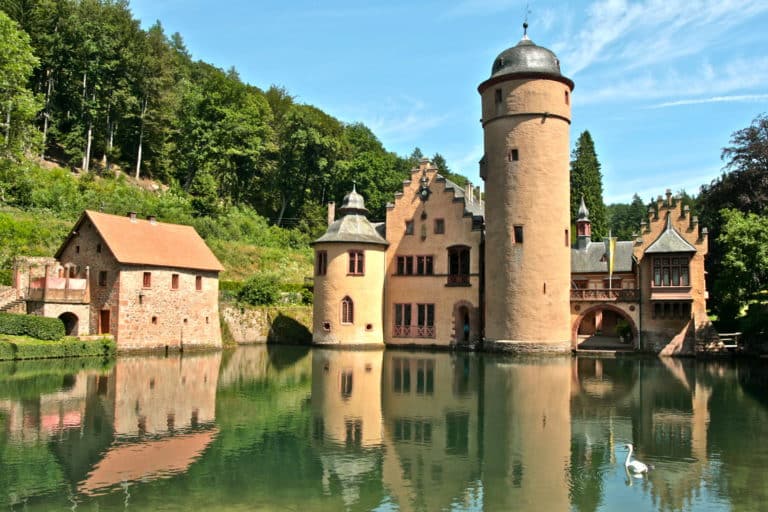
The modest accommodation of the Echter von Mespelbrunn family is located in Mespelprunn between Aschaffenburg and Würzburg and is a so-called moated castle. Moated castles are usually surrounded by water on all sides. In 1412 Johann II. of Nassau gave the land to his electoral forester Hamann Echter where he finally built a house at a pond. In 1427 the unfortified house of Echter’s son became a fortified house with walls, towers and a moat. The following generation finally converted the building into a Renaissance castle.
Website
Castle of Burghausen: Burghausen, Bavaria
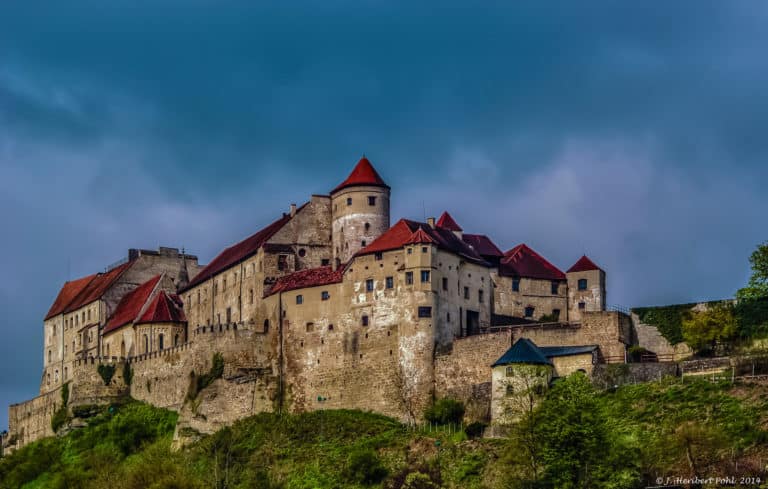
The Burg zu Burghausen castle is the longest castle complex in the world. It is 1051 meters long and is therefore considered the longest castle in the world (official entry in the Guinness Book of Records). The Wittelbach dynasty was responsible for much of the construction and character of the castle between 1480 and 1503. But in fact the origins of the castle date back to the High Middle Ages. The Burg zu Burghausen was first mentioned in writing in 1025. Due to its location on a long mountain ridge, the castle in the north-eastern Upper Bavarian Alps could never be conquered.
Website
Herrenchiemsee Castle: Herrenchiemsee, Bavaria
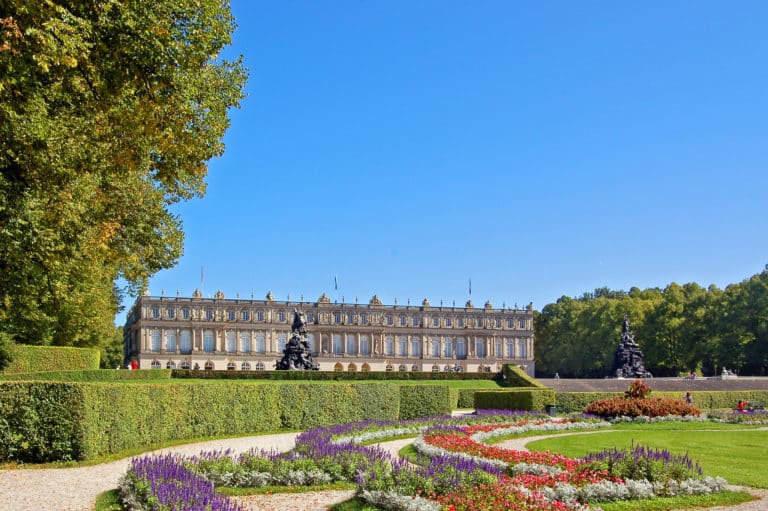
Also known as the New Herrenwörth Palace (Herrenwörth is the former name of the island on which the residence is located), the building on the largest island of Lake Chiemsee was built from 1878 onwards by King Ludwig II, following the example of Versailles. The building, unfinished due to the death of the king in 1886, was supposed to be destroyed at his request, like all the castles of King Ludwig II. However, this did not happen, and the administration of the estate released the venue for viewing as early as 1886. The palace had never played a significant role in history and remained unscathed due to its location, far away from the theatres of war.
Website
Nymphenburg Castle: Munich, Bavaria
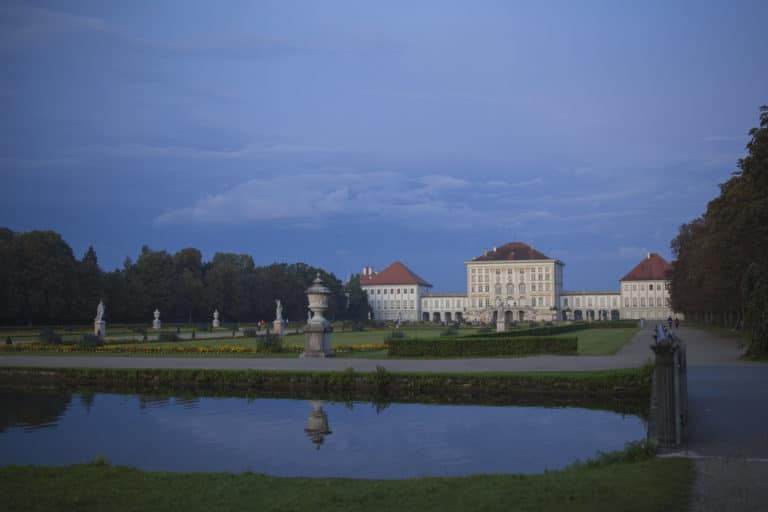
I have often visited this royal residence which is located in my hometown Munich. Mostly to enjoy a few quiet minutes in the sun on a bench in the park. The former summer residence of the Wittelsbach family is one of the sights of Munich and with its width of 632 even wider than the former main residence of the French kings and one of the most famous castles in the world, Versailles. Even today the residence is still inhabited. Franz, Duke of Bavaria, the head of the Wittelsbach dynasty still resides in one wing.
Website
Baden Württemberg
Mannheim Castle: Mannheim, Baden Württemberg

The largest castle in Germany was the residence of the Electors of the Palatinate and was built from several predecessor buildings. First, Friedrich IV built the fortress Friedrichsburg which was followed by a simple palace building after the destruction in the war. In 1967 a barracks was built on the fortress grounds. The castle was finally destroyed in 1689 in the Nine Years’ War, which was followed by the new building. In 1720, Elector Karl Philipp started the new construction of the royal residence. In the Second World War it was again almost completely destroyed.
Website
Lichtenstein: Reutlingen, Baden Württemberg

The “fairy-tale castle of Württemberg”, located in the Swabian Alb, developed from its predecessors the castles of Lichtenstein and Old Lichtenstein. In 1381 the castle of Old Liechtenstein was destroyed. The newly built fortress was considered extremely well-fortified at the time. After the complex had fallen into disrepair in the years after the Thirty Years’ War, Duke Friedrich II gave the order to build a fort and hunting lodge for the later King Friedrich I of Württemberg in 1802.
Website
Heidelberg Castle: Heidelberg, Baden Württemberg
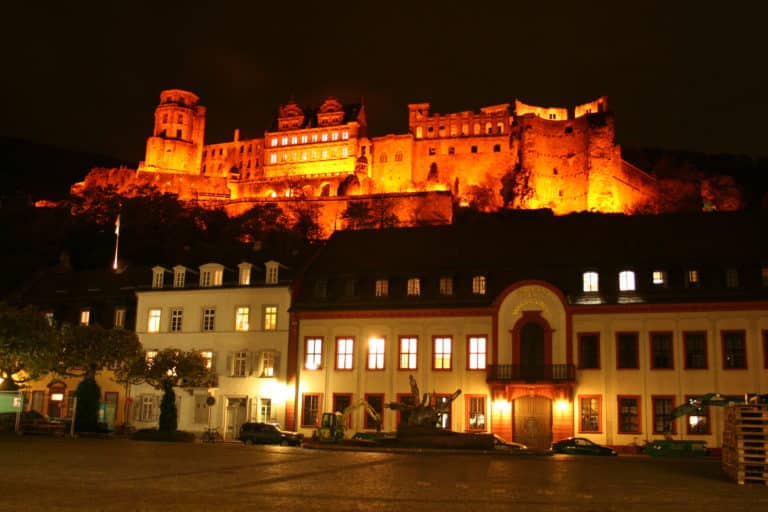
The former residence of the Electors of the Palatinate, which was destroyed in by a explosion in 1689, is Heidelberg’s landmark and one of the most famous ruins in Germany. In 1693 the building was partially restored, but when the building was set on fire by lightning in 1764, the rebuilding was abandoned. From the ruins on the northern slope of the Königstuhl you have a wonderful view of the old town of Heidelberg. If this is not one of the most beautiful castles in Germany, I don’t know.
Website
Hohenzollern Castle: Bisingen, Baden Württemberg
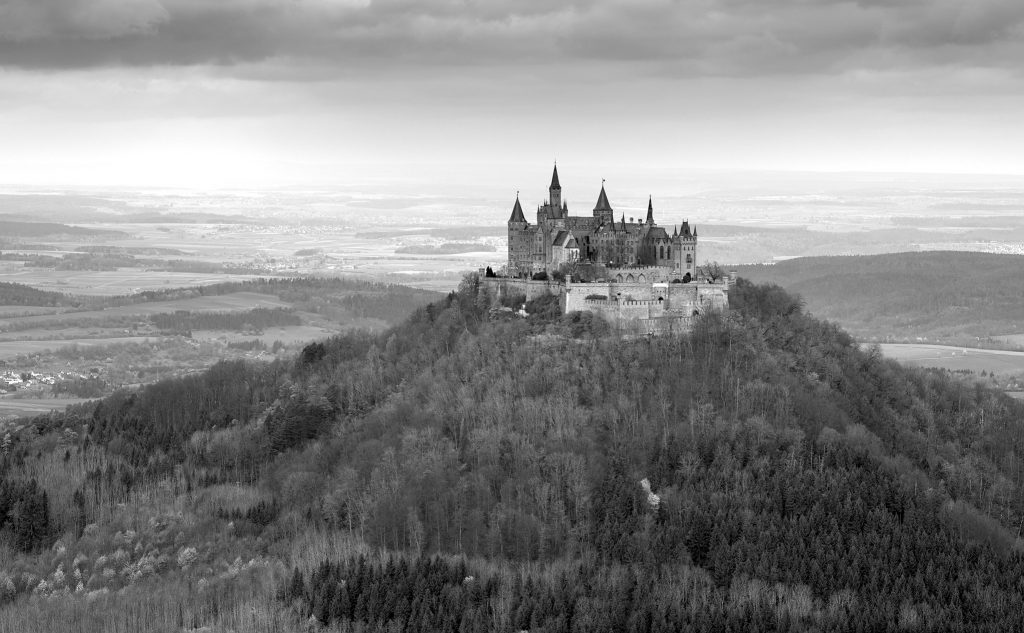
Wow! What a beautiful construction. This royal residence, situated at 855 meters, was built from the castle first mentioned in 1267, which was conquered and destroyed in 1423. It was followed by a second castle which was finally taken and occupied by the Württembergers in 1454. After further occupations, the castle fell into disrepair after the last Austrian capture and their withdrawal. The reconstruction of a third castle initiated by Friedrich Wilhelm IV followed. The form of the building that still exists today was designed by the Berlin architect Friedrich August Stüler. And is this one of the most beautiful castles in Germany? I sure think so.
Castles in Lower Saxony
Marienburg: Pattensen, Lower Saxony
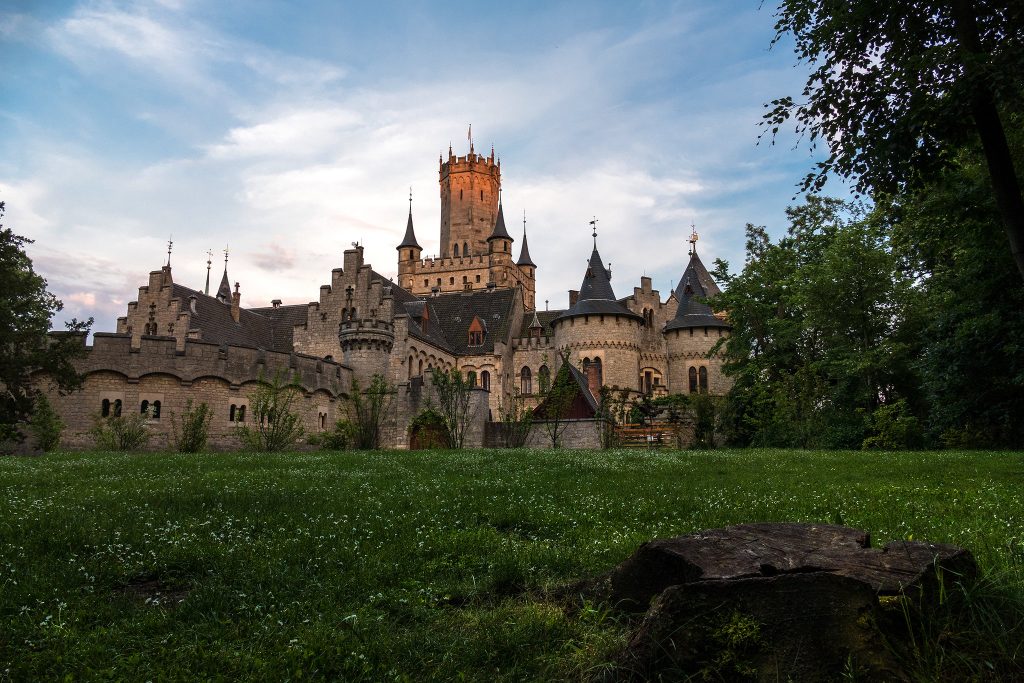
The former summer residence of Georg V. Von Hannover is another impressive building on our list. Currently privately owned by Ernst August Prince of Hannover junior, the royal residence is located on the Marienberg in Pattensen and offers a magnificent view regardless of whether it is winter, summer, autumn or spring. Also belonging to the castle is the railway station of Nordstemmen, which was built as a royal station.
Mecklenburg-Western Pomerania
Schwerin Castle: Schwerin, Mecklenburg-Western Pomerania

The former residence of the dukes and grand dukes of Mecklenburg impresses with the bridge leading to the castle island and a beautiful park. Due to its ring-shaped shape and romantic appearance, it is often referred to as the “Neuschwanstein of the North”, “Cinderella Castle” or “Fairytale Castle”. The island was first built on in 941/942 with a castle complex. The Construction was destroyed in 1160, but due to its strategic location the fortress was rebuilt. Over the years the building has been extended and reworked. Since the 90s, the state parliament of Mecklenburg-Vorpommern has been meeting here. The castle already served as a film set and is on the UNESCO World Heritage List. Definitely one of the most beautiful castles in Germany.
Castles in North Rhine-Westphalia
Drachenburg Castle: Königswinter, North Rhine-Westphalia
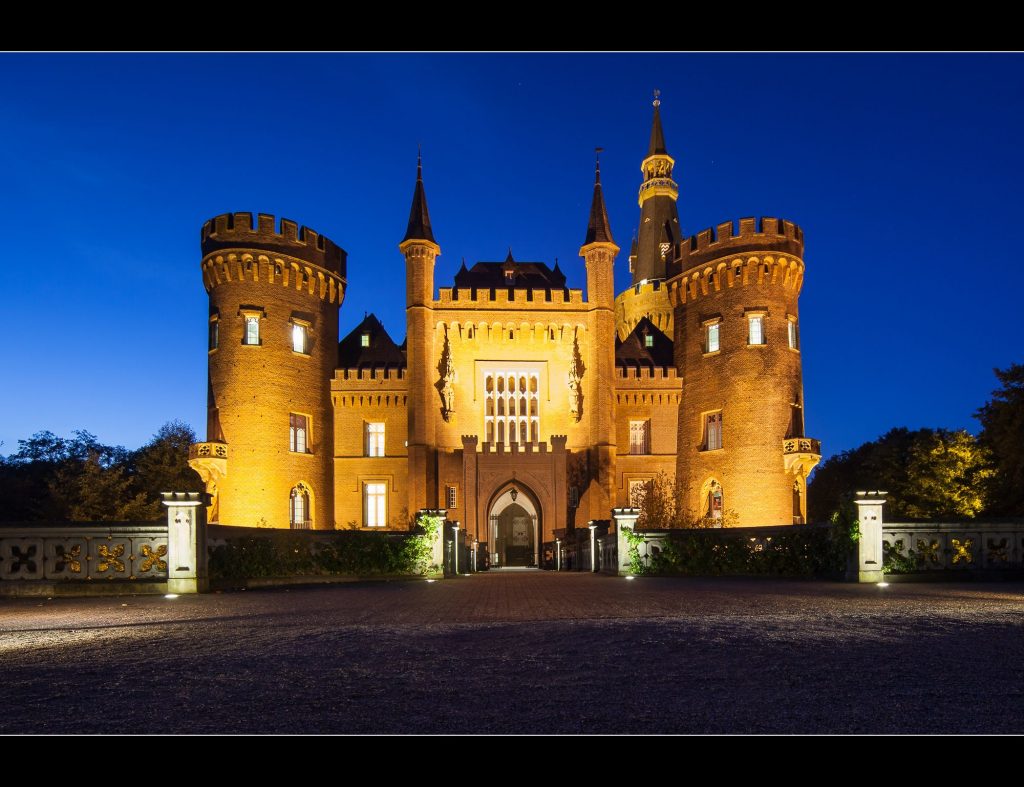
Situated at the Dragon’s Rock (Drachenfels) in Königwinter, it could be part of a Game of Thrones episode just by its location. But of course, Drachenburg is much older and more than just a movie set. The chic little hut was built in record time from 1882 to 1884 for Stephan Freiherr von Sarte, just so that he did not even live in the castle. Why should one live in such a beautiful dwelling? It’ s really a shame. In the meantime, Drachenburg Castle is a listed building and was restored from 1995 to 2019.
Moyland Castle: Bedburg-Hau, North Rhine-Westphalia

Again a fantastic moated castle in Germany on our list. This one is one of the most important neo-gothic buildings in North Rhine-Westphalia. Not for nothing does Moyland derive from the Dutch “mooi land”, which means beautiful country and it is certainly beautiful here. In the meantime, this beautiful German castle has become a museum with an extensive art collection. But not only the building alone, but also the whole park is very impressive.
Saxony
Dresden Royal Palace: Dresden, Saxony
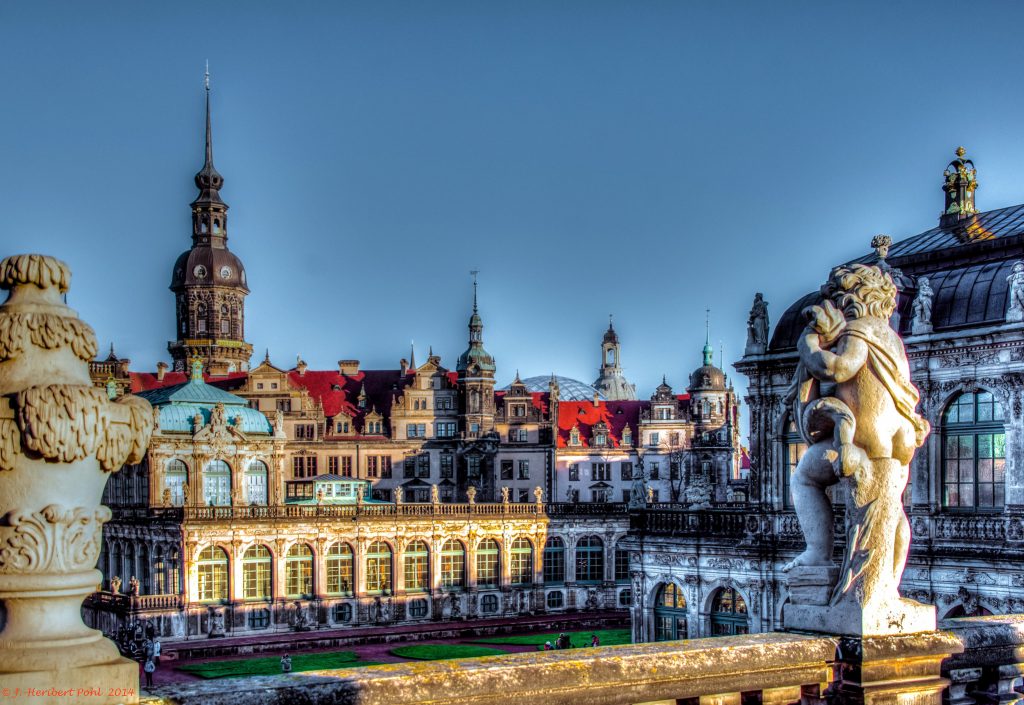
This Renaissance building is located in the centre of Dresden and was the residence of the Saxon electors and kings as well as the seat of the Dresden court. It is one of the oldest buildings in the city. The castle was destroyed in the Second World War. Today there are 5 museums in the building, which has been rebuilt since the 80s. Today the most famous part is the green vault, in which the Dresden Green Diamond is exhibited.
Moritzburg Castle: Dresden, Saxony
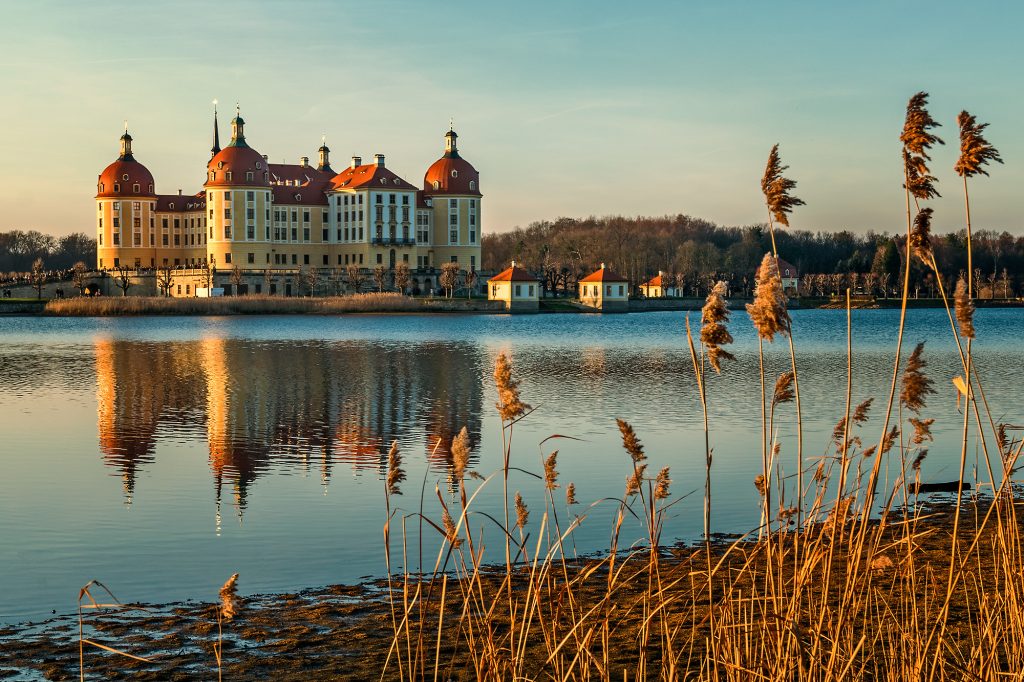
This residence, which was originally called Dianenburg, originated from a 16th century hunting lodge. In 1703 it was finally planned to convert the hunting lodge into a castle. The plans were executed between 1723 and 1733. There were 200 rooms, plus ponds and animal enclosures. The castle belongs to the Dresden Baroque. The residence was later used by Prince Ernst Heinrich of Saxony. A large part of the palace library was destroyed during the air raids on Dresden in 1945. In the later 1940s a museum of Baroque was established in some rooms. In the 80s the chapel was then restored. In the meantime, the building has often served as a film set.
Albrechtsburg Castle: Meissen, Saxony

Also among the most beautiful castles in Germany is the Albrechtsburg. Nowadays this architectural monument is a valued cultural asset. The castle hill on which the building is located has been inhabited since the Young Bronze Age. In 929 Heinrich I. was looking for a place for a new castle. He finally found it here. Over the years, the castle has been rebuilt several times and has been inhabited by various nobles. Since the 19th century the rooms are open to visitors. Between 1710 and 1863 the premises were used as a production facility of the Saxon porcelain manufactory. Today there is a museum here.
Castles in Rhineland-Palatinate
Castle Eltz: Wierschem, Rhineland-Palatinate
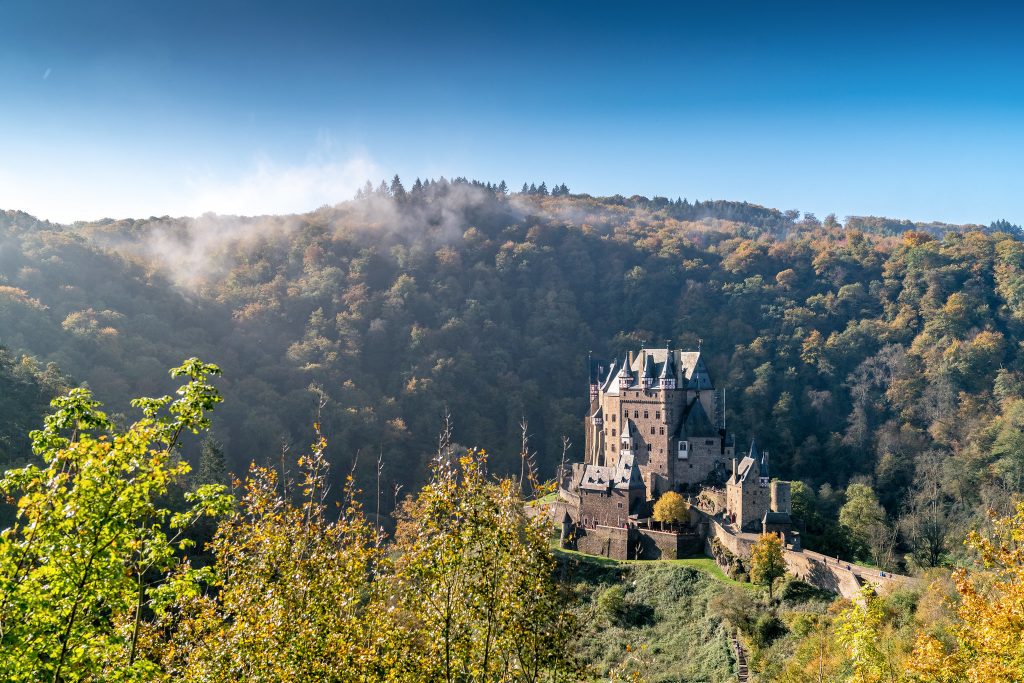
One of the most beautiful castles in Germany is certainly the 12th century Eltz Castle in the Elz Valley. The walls have never been conquered in the course of history, making the building one of the most famous in Germany. Eltz was first mentioned in writing in 1157. It is surrounded by the river Elz and towers majestically on a Rockhead. To this day, this picturesque construction is still owned by the Elz family. The last restoration work took place in 2009 -2012. During the summer months a part is open to visitors.
Reichsburg Cochem: Cochem, Rhineland-Palatinate

Another exciting and majestic medieval building is the Reichsburg Cochem. This impressive complex is the landmark of Cochem on the Moselle. Research has shown that it was probably built around 1100. But once again this building fell victim to the war and was finally destroyed in the 17th century by Lieutenant de Saxis and rebuilt between 1868 – 1877. Such an exciting building is of course under monumental protection. Also, this building is today used as a museum and is open to the public.
Rheinstein Castle: Trechtingshausen, Rhineland-Palatinate

Also called Vaitzburg or Burg Voitsberg, this building is a UNESCO World Heritage Site. The castle is situated on a 90-metre-high rock spur and overlooks the Rhine. The building was erected in the early 14th century, to be more precise, the start of construction was dated 1316/17. Over the years, Rheinstein has appeared under various names in history. The fortress, which has been lavishly restored over a long period of time, is currently privately owned, but is open to the public. From the Rhine Tower you have a fantastic view of the adjacent terraces and the Rhine Valley.
Castles in Saxony-Anhalt
Wernigerode Castle: Wenigerode, Saxony-Anhalt
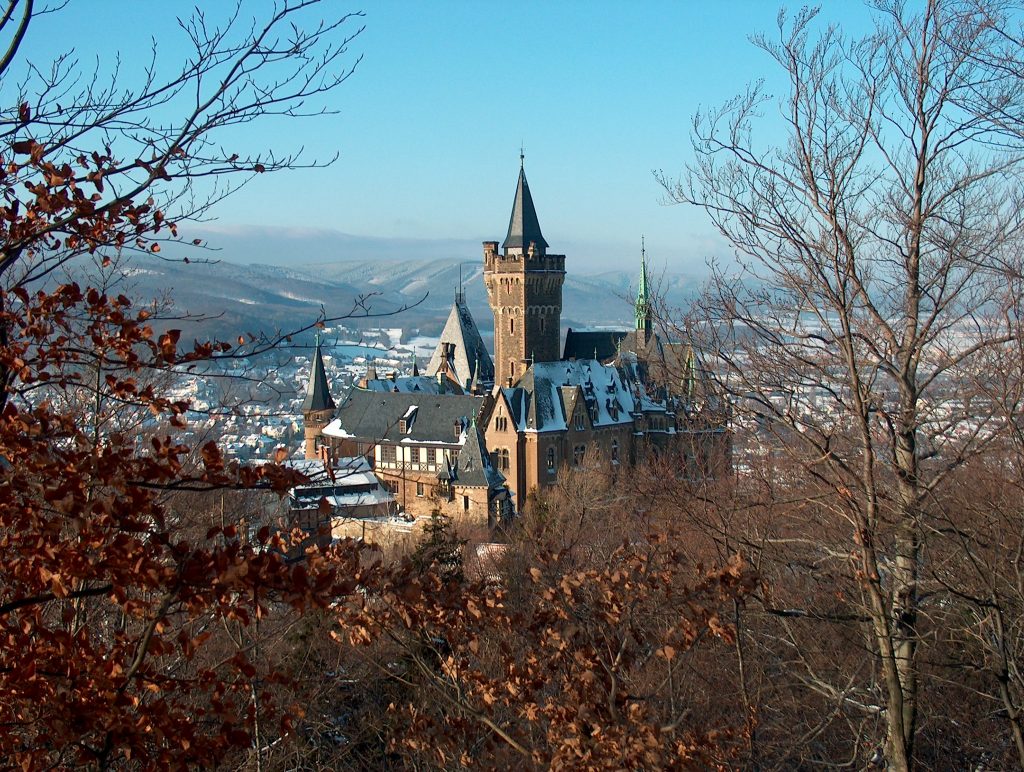
Wernigerode originated in the 12th – 13th century and lies about 100 meters above the clearing settlement of Wernigerode. As the male generation of the Counts of Wernigerode the Counts of Stolberg took over the castle as well as the county of Wernigrode. Christian Ernst zu Stolberg-Wernigerode had Wernigerode rebuilt into a baroque castle in the 18th century. During the second world war many old relics which were in the castle were unfortunately destroyed. Today the Röumlicktein serves as a museum centre for art and cultural history.
The most beautiful castles in Hessen
Löwenburg: Kassel, Hesse
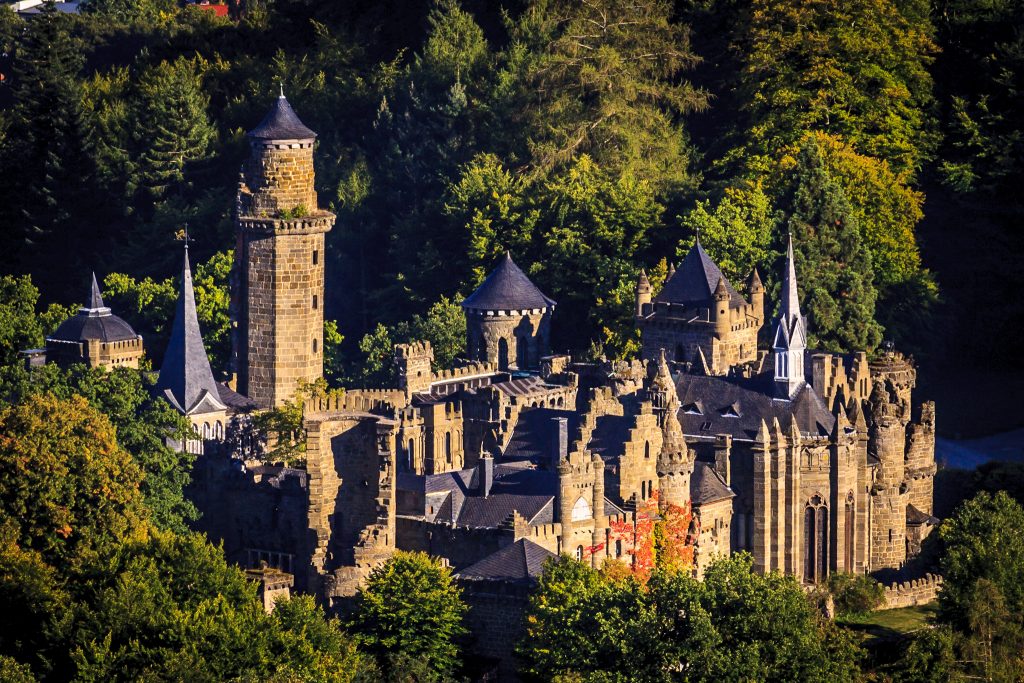
This pleasure palace was built in 1793 at 350 m above sea level as an artificial ruin and is considered one of the most important buildings of the neo-Gothic style in Germany. It was inhabited during the lifetime of Landgrave Wilhelm IX and served as his final resting place after the death of the count. During the Second World War, the building was severely damaged in bomb attacks by the United States Army Air Force and the Royal Air Force. Currently the keep is still under reconstruction and will probably be reopened in the 2020s. The Löwenburg served as a backdrop for several film productions. The interior can also be visited.
Frankenstein Castle: Mühltal, Hesse
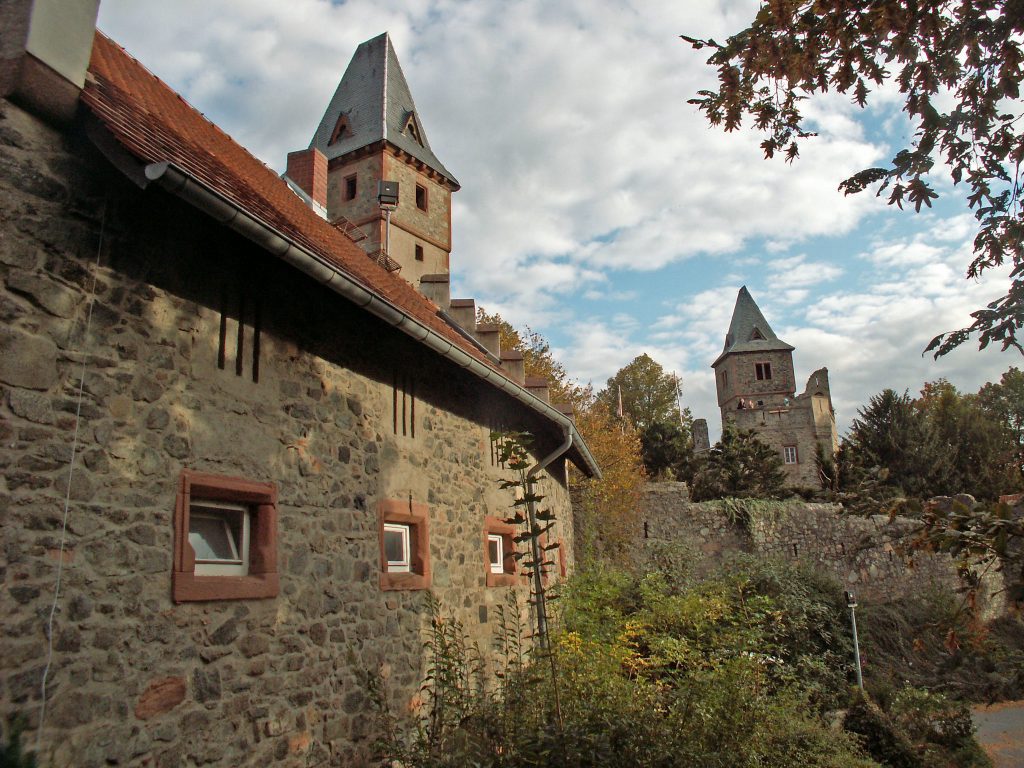
Although there is considerable doubt that the building is connected with the novel of the same name, this does not make the complex any less beautiful and admirable. In the year 1252, the impressive building was first mentioned, but it is supposed to have been originated some years earlier. Around 1400, the premises became too small, so they were extended in a modernised way. And also in the 16th century, the diligent building continued due to the good economic situation of the rulers. The many myths and legends about the castle are particularly interesting. Today it is a popular destination for excursions, as several hiking trails pass the castle and one of the biggest Halloween festivals in Germany takes place here every year.
Wilhelmshöhe Castle: Kassel, Hesse

This magnificent building, built between 1786 and 1798, is located in the Bergpark Wilhelmshöhe in Kassel. Together with the Bergpark, Wilhelmshöhe is now recognised as a UNESCO World Cultural Heritage Site and is now used as a museum. Originally there was a monastery on the ground, which later had to make way for a hunting lodge. The building as it exists today was built between 1786 and 1798. From 1891 to 1918 it was used by the imperial family as a summer residence. Wilhelmshöhe was also severely damaged after air raids in the Second World War.
The most beautiful castles in Brandenburg
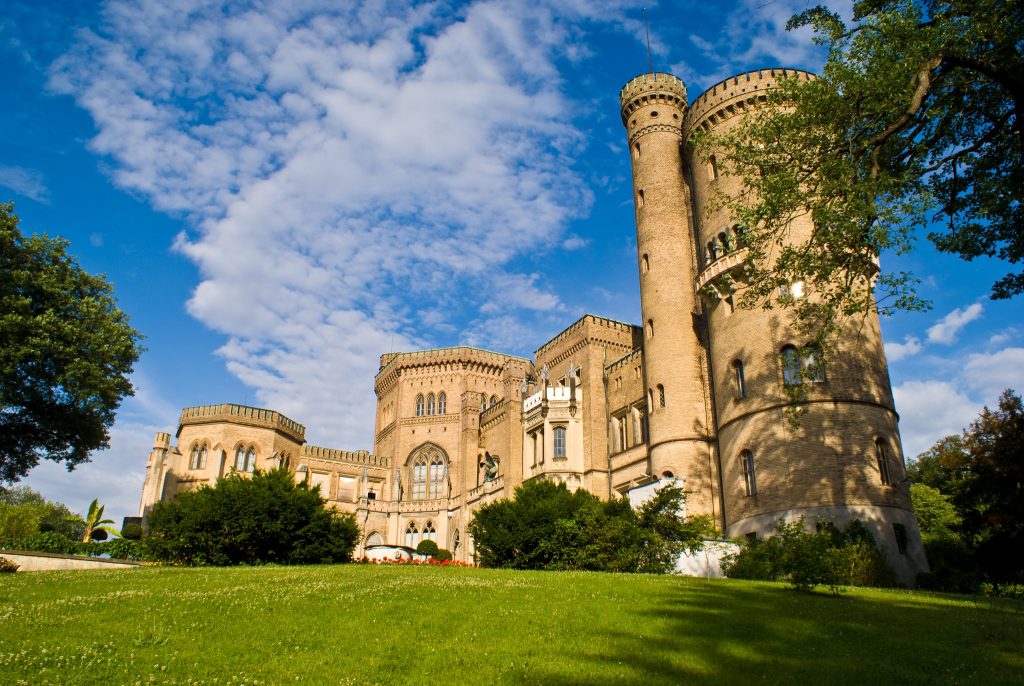
In 1833 a son of King Frederick William III began planning the neo-Gothic style of Babelsberg, which stands on the banks of the Havel. After an initial construction phase, the royal residence was inaugurated in 1849. Since other accommodations were finally preferred by the successors of Wilhelm I from 1888 onwards, no further alterations were made.